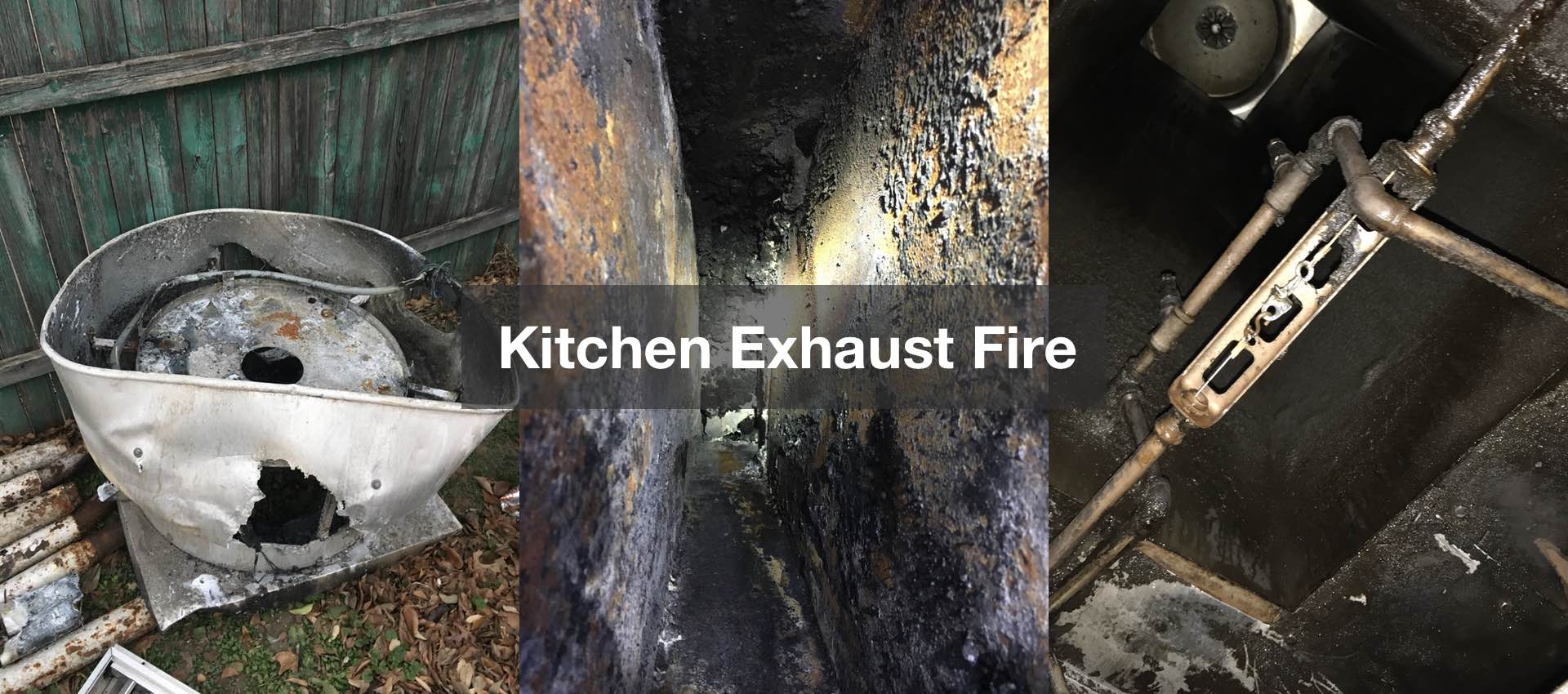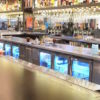Kitchen exhaust cleaning is a standard part of routine maintenance of any restaurant. When the buildup of grease becomes heavy, a fire hazard exists.
According to a report from the National Fire Protection Association, U.S. fire departments responded to an estimated average of 7,640 structure fires per year in eating and drinking establishments between 2006 and 2010. These fires caused average annual losses of two civilian deaths, 115 civilian injuries, and $246 million in direct property damage per year. Approximately 60 percent of these fires involved cooking equipment.
Here is a common scenario of how a fire starts in the kitchen exhaust system:
A flame flares up on the stove and contacts the exhaust hood, causing the baffle filters to ignite. Since the exhaust fan is on, air is drawn into the hood, moving through the filters and up the duct, pulling the flame along with it. If significant grease residue exists on the interior of the duct, this can act as fuel and spread the fire up the duct, potentially into the exhaust fan. Motors and electrical wiring in the fan itself can also cause ignition.
When hiring a kitchen exhaust cleaning company, restaurants should look at the company’s reputation and quality of work, rather than the cost. If an exhaust cleaning company provides a quote that seems too good to be true, there is a STRONG possibility they are cutting corners – something that simply cannot be done in our business.
What happens when corners get cut? Please see photos below. This restaurant had been using a vendor who offered them a very low price but “guaranteed” their work. Did they document their jobs with photos? No. Did they use the proper tools and chemicals? No. Did they obtain a certificate of insurance so if there was an incident the customer would have recourse? No.

Damaged upblast fan

Sheetrock removed for access by fire department

Sheetrock removed for fire department access

Fire-ravaged exhaust duct

On roof, exhaust fan removed from end of ductwork

Damaged ductwork, looking up towards exhaust fan from vent hood

Fire-damaged vent hood

Damaged tile flooring from kitchen fire
As with any commercial entity, fire damage typically leaves employees out of work until the building has been given the greenlight to reopen. Lost time results in lost wages, potentially putting a strain on individual lives and families. Time is also lost from having to deal with insurance and filing a claim and replacing or repairing equipment and the property.
Additionally, costs can soar for the restaurant due to equipment damage not only from the fire itself, but from the fire department when they come out to prevent the fire from causing further damage to the building and potentially other buildings nearby.
While Halo never likes having to handle a job after damage from an exhaust system fire, we do take the opportunity to educate our customers on what a properly cleaned exhaust system should look like and how to perform inspections themselves. Hopefully this will prevent kitchen fires in the future and prevent unnecessary damage to property.




